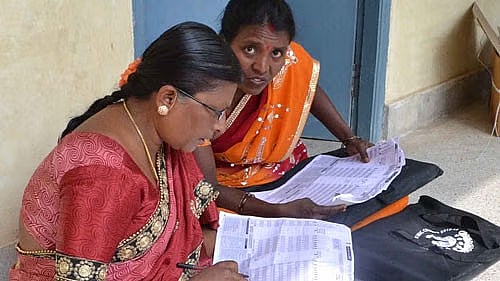
Post-Independence, this is the first time India would conduct a caste count, which was last held almost a century ago as part of the 1931 census.
Credit: DH photo
In a decision fraught with larger political implications, the Narendra Modi government on Wednesday announced the inclusion of caste enumeration in the next decennial census. Post-Independence, this is the first time India would conduct a caste count, which was last held almost a century ago as part of the 1931 census.
“This will strengthen the social and economic structure of society while the nation continues to progress,” Information and Broadcasting Minister Ashwani Vaishnaw said after a series of meetings, including the Cabinet Committee on Political Affairs, chaired by Modi.
The government, however, did not specify when the Registrar General and Census Commissioner of India (RGCCI), which conducts the census and comes under the Union Home Ministry, would undertake the enumeration, an exercise that was slated for 2021, but was postponed due to Covid-19.
Politically, the CCPA decision comes amid growing clamour for a caste census as both NDA parties and the I.N.D.I.A bloc compete to burnish their social justice plank after the 2024 general elections that threw up a hung parliament.
Having benefited from the “save-Constitution” campaign, the Congress and its allies, while claiming under-representation of weaker sections in employment and education, have since made a determined push for a shift from the current policy of adequate to proportional reservations by breaching the 50 per cent quota cap set by the Supreme Court.
In the last six months, the two opposition governments in Karnataka and Telangana have used the state-specific caste surveys to expand the scope of affirmative action for the Scheduled Caste, Scheduled Tribes and the Socially and Educationally Backward Communities, a model that the I.N.D.I.A bloc allies have promised to replicate in poll-bound Bihar, where elections are scheduled later this year.
Accusing the Congress and allies of using caste surveys with a “political angle in a non-transparent way”, Vaishnaw, while announcing the CCPA decision, insisted that as per Article 246 of the Constitution, the Census, under the Seventh Schedule, is exclusively a Union subject.
“Such surveys (by states) have created doubts in society. Considering all these facts and to ensure that the social fabric is not disturbed by politics, caste enumeration should be transparently included in the Census instead of surveys,” Vaishnaw said while citing the implementation of the 10% reservations for Economically Weaker sections without “causing stress” in the society.
Some NDA allies, especially those that have emerged from Uttar Pradesh and Bihar, too, have called for a caste count. The Bihar Caste survey and the ensuing Bill to increase quota in the state, conducted by Nitish Kumar in alliance with Lalu Yadav’s RJD, has been struck down by the courts.
The RGCCI has, since 1951, in the decennial census has conducted a separate count for only the Scheduled Castes and Scheduled Tribes. In the absence of any credible data on the OBC population, the 1931 caste census has been used extensively by various backward classes commissions, including the Mandal panel, to extrapolate the number and socio-educational status of the communities.
The closest any government came to enumerating caste was in 2010 when the Manmohan Singh government approved the Socio-Economic Caste Census, intended to rank households based on socioeconomic status and get authentic information on caste-wise population, socioeconomic, and educational status. The “caste specific” data was, however, not made public.